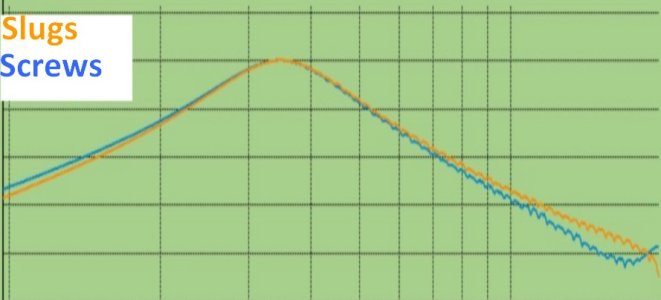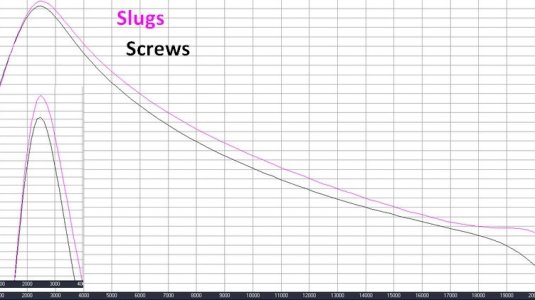I'm sorry but my experience was the opposite
with the screws brighter and the slug coil slightly warmer.
Weird
I'm also sorry to annoy potential readers with the longer answer below...

A parenthesis in my previous post states that location under the strings was left aside in my explanation. This location causes a comb filtering effect of harmonics changing with the scale AND notes. The Tillman applet that I've shared here dozens of times illustrates that:
https://till.com/articles/PickupResponseDemo/index.html
So each coil "comb filters" the sound in a slightly different way.
There's also potentially a capacitive mismatching between coils with 4-conductors cables: it depends on the lenght of the cable and with which inner conductor the naked ground wire is finally connected... I've devoted a long topic to this question on the music-electronics forum, with a boatload of experimental screenshots collected by our lab gear.
Furthermore, louder is often felt as brighter and the coils with screws are often louder because closer to the strings (because of their settings or/and of the angle of the pickups).
Oh, and... if a low carbon alloy is used for the slugs vs a high carbon alloy for the screw poles, it might change the tone too, of course. ;-)
These
random factors interact with the sound, potentially or factually, and might make that a coil with screw poles is felt as brighter.
But basically, in a typical Gibson style humbucker, the coil with slugs IS brighter: shorter magnetic poles are more efficient, with less Foucault currents and inductance.
It's possible to brigthen a coil with screws : clipping these poles will do that, by decreasing the inductance and eddy currents.
Below is a screenshot of electrically induced response on a
typical 2 conductors symetrically wound Gibson style HB, up to 20khz. Each vertical steps measures 10dB. Resonant peaks have been aligned. The coil with screws is still louder before resonant peak and darker beyond it, VS the coil with slugs.
All that being said: have you listened the example that I've shared and what did you hear?




